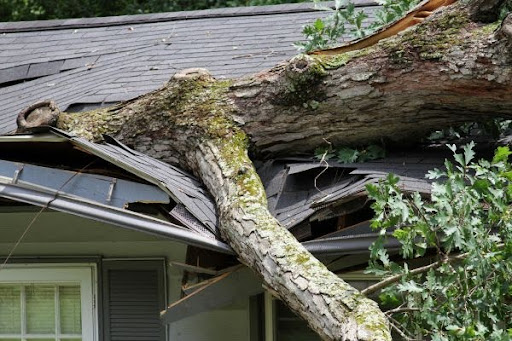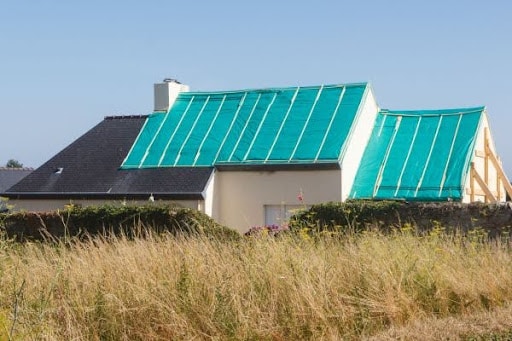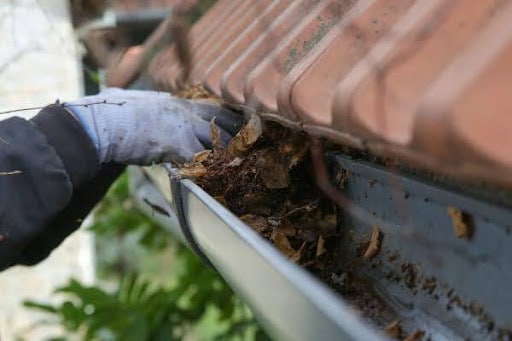Our Top 6 Tips for Hurricane-Proof Roofing Options
March 15, 2025
March 15, 2025
If you’ve lived in Florida for just a couple of years, then you’ve already seen your fair share of hurricanes. Hurricanes are just a fact of life in our state. With hurricane season rapidly approaching, now is the time to prepare your home for any future hurricanes.
One concern with hurricanes is the damage that they can cause to roofs. Strong winds, loose debris, and heavy rains are all risk factors for roof damage. In order to minimize this risk and reduce the amount of damage caused, there are several steps you can take to protect your roof this hurricane season and prevent the need for emergency roof leak repairs for Florida homes after the storm!
When a hurricane comes, you’ll want to be well prepared. Here are our top six tips for protecting your roof and your home during Florida’s upcoming hurricane season.
One of the best ways to ensure you’re ready for any storm that comes your way is by scheduling a professional roof inspection right before hurricane season begins. While you may be able to see some obvious signs of roof damage, there may be damage that can’t be seen from the ground. A professional can thoroughly inspect your roof and its structure for any weakness, loose shingles, or cracks that could go unnoticed by an untrained eye.
A hurricane’s heavy rains and high winds exacerbate any issues you haven’t noticed, turning a potential problem into an active leak or even a collapsed roof. For this reason, you’ll want to get an inspection after hurricane season as well to ensure nothing was damaged or weakened during the storm.

Even if your roof is flawless and brand new, a tree falling on your roof can cause significant damage. Maintaining the trees in your yard is an important step in making sure your trees can weather the hurricane’s winds and that they don’t harm your home if they do fall.
The preparation of your trees takes place months before any storm is even named. Attempting to prune and trim branches as the storm is coming can turn the branches into hazards when the winds hit and cause even more damage. However, a properly placed and pruned tree can actually protect your home from the wind and rain.
Just like a roof inspection, you will want a tree professional to evaluate your home’s trees. They’ll be able to tell you the health and strength of your tree, so you know if it can weather a storm, needs to be trimmed down, or should be removed altogether.
You may be surprised to learn that you may not have the best roof material for your home’s location. While metal roofs tend to be more durable than shingles, it doesn’t do as well in wooded areas. On the other hand, asphalt shingles aren’t ideal for homes along the coast.
Considerations like this are important to evaluate before a storm comes. You’ll want to know what the best material is for your home and which will best protect you in a storm.
If you decide to invest in a different roof material, make sure that your roof replacement is scheduled with plenty of time before hurricane season arrives—in fact, we’d suggest waiting until after hurricane season if you can. The last thing you want is an incomplete roof in the middle of a hurricane!

Just like a first aid kit is better to have prepared before an injury occurs, you’ll want to have a roof toolkit before damage happens. The main thing you’ll want to have in this toolkit is a roof tarp.
If a storm does happen to damage your roof, a tarp will protect your roof from further damage and keep your home dry from the elements. While you can’t put on a tarp in the middle of a hurricane, securing a tarp after the storm has passed can significantly reduce additional damage.
Tarps tend to be scarce after a hurricane, so make sure you’re well prepared by having a tarp for your home before a storm is named.

A big concern for your roof during a hurricane is water damage. Water can weaken the overall structure of your roof and cause leaks in the house. Gutters are essential in decreasing the amount of sitting water on your roof during a storm.
Clogged gutters lead to water buildup on your roof, potentially causing damage from pooling water. Cleaning and removing blockages from your gutters will allow for a free flow of rainwater. Hurricanes are notorious for causing debris build-up in your gutter’s pipes, so they must be cleared before the storm arrives to avoid a blockage.
One of the best things you can do for your home right before a storm hits is document and photograph everything about your roof. If your roof suffers any damage from the storm, documentation will make the insurance process run much easier and smoother.
You’ll want to get repairs quickly if the hurricane caused any roof damage. A lot of the delays can be caused by insurance if they’re unsure about what coverage you qualify for.
With well-documented photographs of your roof before the storm and records of maintenance, you’ll be several steps ahead of your insurance provider and can begin repairs as soon as possible.
Whether you want a roof replacement, need a few maintenance repairs, or just want an inspection to make sure your roof is secure, Big D Roofing is here to come alongside you during the Florida hurricane season.
We know that preparing for a hurricane can be stressful. That’s why we’re here to walk you through each step of preparing your roof for hurricane season. We make sure that our installation and repairs are quick so that your family can remain safe and dry. We even offer a five-year warranty on all of our work so that you can rest easy, knowing your roof is in good hands.
Hurricane season is right around the corner. If you want to get ahead of the game and make sure your roof can weather any storm, schedule an inspection today.